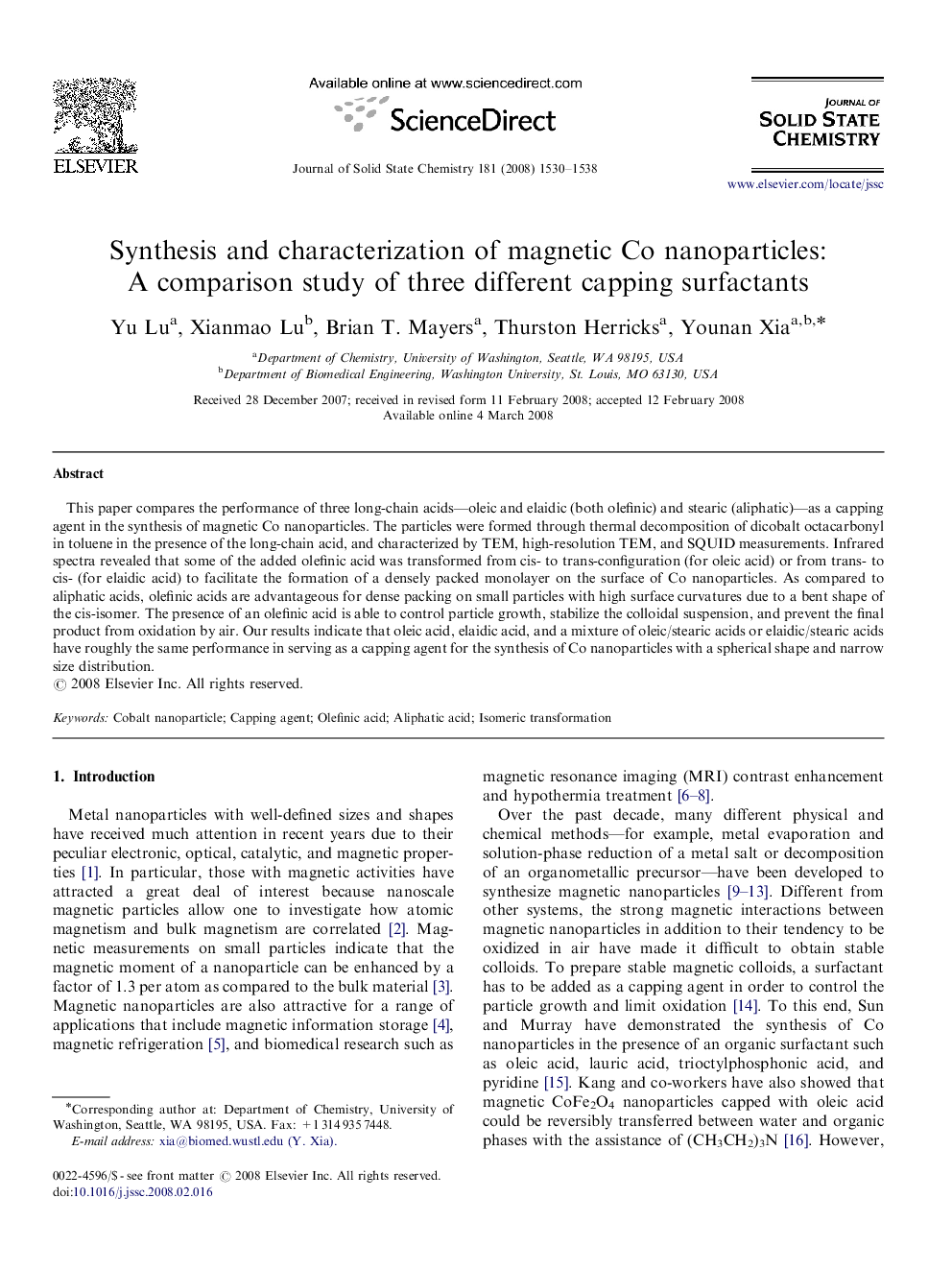| Article ID | Journal | Published Year | Pages | File Type |
|---|---|---|---|---|
| 1333639 | Journal of Solid State Chemistry | 2008 | 9 Pages |
This paper compares the performance of three long-chain acids—oleic and elaidic (both olefinic) and stearic (aliphatic)—as a capping agent in the synthesis of magnetic Co nanoparticles. The particles were formed through thermal decomposition of dicobalt octacarbonyl in toluene in the presence of the long-chain acid, and characterized by TEM, high-resolution TEM, and SQUID measurements. Infrared spectra revealed that some of the added olefinic acid was transformed from cis- to trans-configuration (for oleic acid) or from trans- to cis- (for elaidic acid) to facilitate the formation of a densely packed monolayer on the surface of Co nanoparticles. As compared to aliphatic acids, olefinic acids are advantageous for dense packing on small particles with high surface curvatures due to a bent shape of the cis-isomer. The presence of an olefinic acid is able to control particle growth, stabilize the colloidal suspension, and prevent the final product from oxidation by air. Our results indicate that oleic acid, elaidic acid, and a mixture of oleic/stearic acids or elaidic/stearic acids have roughly the same performance in serving as a capping agent for the synthesis of Co nanoparticles with a spherical shape and narrow size distribution.
Graphical abstractMagnetic Co nanoparticles were synthesized in the presence of different capping agents and the effect of their molecular structures on the morphology of Co nanoparticles was analyzed. The transformation between cis- and trans-isomers of olefinic acids was critical to the formation of a densely packed monolayer on the surface of small nanoparticles characterized by high curvatures.Figure optionsDownload full-size imageDownload as PowerPoint slide
